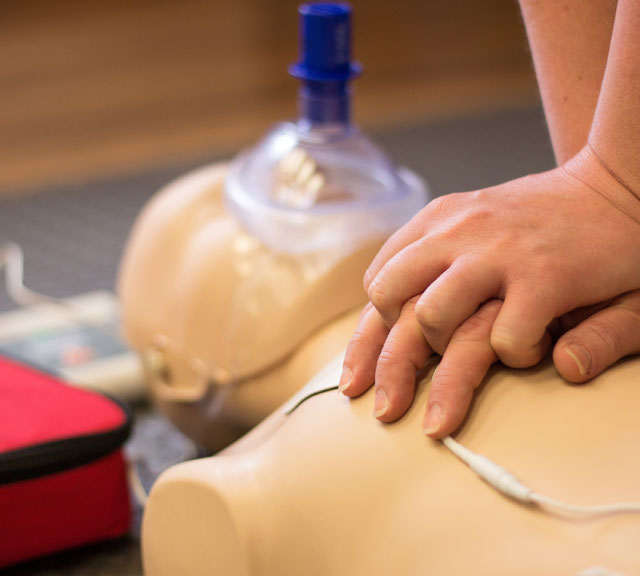CPR: Can’t Get It Out of Your Head

Find Your Perfect Match
Answer a few questions and we'll provide you with a list of primary care providers that best fit your needs.
You know how a melody can get stuck in your head? Maybe that happened to you a few years ago when the American Heart Association (AHA) recommended doing CPR (cardiopulmonary resuscitation) chest compressions to the beat of the Bee Gees’ disco hit “Stayin’ Alive”.
Ah, ha, ha, ha.… Are you hearing it now?
The AHA hopes so. And that you find all the current CPR guidelines equally memorable, particularly when you encounter someone who collapses, stricken by sudden cardiac arrest.
The current guidelines highly recommend compression-only CPR, which can be performed by bystanders untrained in CPR. Compression-only CPR is an alternative to conventional CPR. That is, chest compressions and mouth-to-mouth breathing, at a ratio of 30 compressions to two breaths – the method recommended for medical professionals and people trained in CPR.
Conventional CPR is recommended for use with children and, in some cases, for adults experiencing near-drowning or drug overdose.
The current guidelines highly recommend compression-only CPR, which can be performed by bystanders untrained in CPR.
CPR in Two Steps

Compression-only CPR – also called hands-only CPR – involves two steps:
- Call 9-1-1. Or have someone on scene call as you begin step 2.
- Push hard and fast, with one hand on top of the other, in the center of the chest. Use your body weight to administer compressions at least two inches deep, 100 times a minute – to the beat of “Stayin’ Alive.” Avoid leaning on the chest between compressions.
The sooner CPR is started, the better. In sudden cardiac arrest, blood stops flowing to the brain and other organs and death can occur in minutes. Chance of survival decreases 10 percent each minute after sudden cardiac arrest, without CPR and/or use of an automated external defibrillator (AED).
The Chain of Survival
CPR is the second of five links in the AHA’s Chain of Survival:
- Early recognition of cardiac arrest and immediately calling 9-1-1 for emergency medical response
- CPR with an emphasis on chest compressions
- Early defibrillation by bystanders with an AED, if one is available. AEDs are available in many public places.
- Early advanced care provided by Emergency Medical Services upon arrival at the scene
- Advanced life support and post-cardiac arrest care at the hospital
To find CPR training near you, contact:
- American Heart Association
 or 800-AHA-USA-1 (800-242-8721)
or 800-AHA-USA-1 (800-242-8721) - American Red Cross
 or 800-RED-CROSS (800-733-2767), or your local Red Cross office
or 800-RED-CROSS (800-733-2767), or your local Red Cross office
Find Your Perfect Match
Answer a few questions and we'll provide you with a list of primary care providers that best fit your needs.
Source: American Heart Association; American Red Cross; CPR Headquarters; Washington Post




